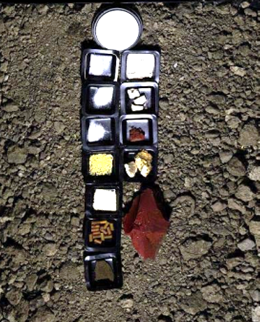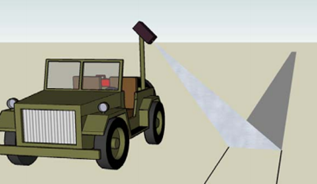Detection of explosives
Classifying and detection of leftover explosives in military shooting ranges
Classifying and detection of leftover explosives in military shooting ranges
Left over explosives in military shooting ranges are considered to pose both an environmental hazard and a health risk due to its toxicity. The explosives particles are typically of varying sizes and spread heterogeneously over large areas. To do risk assessment and clean up, it is necessary to map the distribution of explosives and detect areas of high pollution. This can be a time consuming and an expensive job where a large number of samples need to be collected and analyzed.
This task can be greatly reduced by scanning the shooting range using a hyperspectral camera capable of imaging large areas with high spatial and spectral accuracy. In this application note we show how different types of explosives can be detected and separated from a background of soil or grass using hyperspectral imaging. The results presented are from a research report by the Norwegian Defence Research Establishment [1] with permission from the authors.

| Grey reference | |
| HMX pure | HMX based explosive |
| RDX pure | TNT and RDX mix in vax |
| PETN pure | Unknown found in field 1 |
| TNT pure | TNT melted found in field |
| Tetryl pure | Unknown found in field 2 |
| Gunpowder | |
| Gunpowder | |

The result shows that most of the samples have a characteristic spectral signature in the SWIR region that can be used to distinguish them from the background. The only exception is one of the unknown samples found in the field that shows very limited spectral structure. From the reflectance plot we also see that it could be feasible to use hyperspectral imaging to characterize the type of explosive as each type has a distinctive spectral signature. Interestingly, the minimum around 1650 nm appears to be common and characteristic for explosives, but other spectral features are also contributing to the detection and classification.


Anomaly detection and segmentation. The anomaly plot (left) shows how well the different types of explosives can be separated from the background – soil, in this case. In the image to the right, a threshold value is selected to segment the image. All pixels below the threshold are colored black and all pixels above the threshold are colored white. All the samples representing different types of explosives can be clearly separated from the background, the only exception in this example being the Unknown sample 1.
By applying anomaly detection, foreign objects other than explosives will also be detected. If the goal is to clean up an area, this can be an added benefit as other types of debris and contaminants will be efficiently identified. Other data processing techniques can be applied to the data if the goal is to distinguish explosives from other objects or to distinguish them from each other. The detection and classification can also be implemented in real-time.

Multiplatform deployment. The HySpex cameras can interchangeably be used in laboratory, field, airborne and UAV-based platforms. The analysis can be implemented in real-time or during post-processing.
[1] Lie, L.A., Skauli, T., Karsrud, T. E. and Parmer, M. P.: “Deteksjon av eksplosivrester i felt ved hjelp av hyperspektral avbildning.” FFI-rapport 2009/01426, Norwegian Defence Research Establishment (FFI). November 20, 2009.
[2] Several newer SWIR camera models with improved specifications are also available from HySpex.
[3] Spatial and spectral misregistration. Visit hyspex.com for technical information on high-end hyperspectral cameras.




Pharmaceuticals



Methane Detection

Plastic Sorting

Mineral mapping in open pit mines

Asbestos

Explosives

Hyperspectral Imaging for Ore Distinction

Hyperspectral Analysis of Powder Mixtures

Paper Recycling

Rare Earth Elements

Coating thickness

Monument Preservation

Cocoa Beans